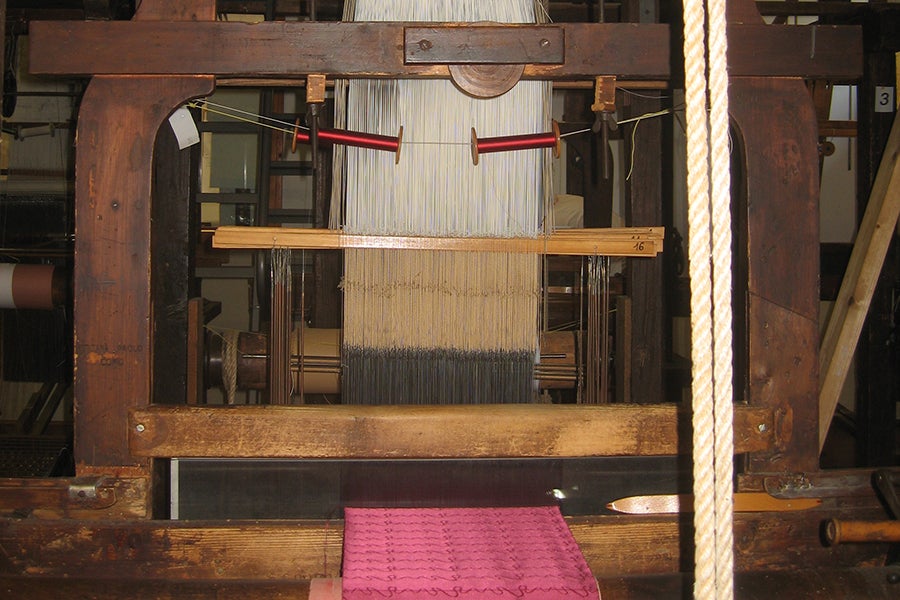Loom
Amanda Phillips
Related Terms:
- Ikat (dyeing technique that employs binding and resists dyeing)
- Khilʿa (robe of honor)
- Silk (natural fiber made from silkworm cocoons)
- Suzani (embroidered textiles from Central Asia)
- Tiraz (medieval embroidered textiles, also refers to the factories in which they were made)
- Velvet (type of luxury compound weave)
Related Khamseen Videos:
Sam Bowker, “The Egyptian Tentmakers and the Art of Khayamiya,” Khamseen: Islamic Art History Online, published 28 August 2020.
Sumru Belger Krody, “Prayer Carpets,” Khamseen: Islamic Art History Online, published 11 May 2021.
Richard McGregor, “Hajj Materials and Rites from Egypt,” Khamseen: Islamic Art History Online, published 9 February 2021.
Elizabeth Dospěl Williams, “Craft and Aesthetics in Byzantine and Early Islamic Textiles,” Khamseen: Islamic Art History Online, published 19 October 2020.
References:
Emery, Irene. The Primary Structure of Fabrics: An Illustrated Classification. Washington, DC: Textile Museum, 1966 and 1980. ![]()
Hooper, Luther. Handloom Weaving: Plain and Ornamental. 2 vols., London: Pitmann and Sons, 1936. ![]()
Jain, Rahul. Woven Textiles: Technical Studies Monographs. 1–3, Ahmedabad: Calico Museum and Sarabhai Foundation, 2008–2013. ![]()
Mackie, Louise. Symbols of Power: Textiles from Islamic Lands, 7th–21st Centuries. New Haven and London: HALI and Yale University Press, 2015. ![]()
Phipps, Elena. Looking at Textiles: A Guide to Technical Terms. Los Angeles: Getty Foundation, 2012. ![]()
Serjeant, R. B. Islamic Textiles: Material for a History up to the Mongol Conquest. Beirut: Librairie du Liban, 1972 [taken from articles published serially in Ars Islamica, 1942–51]. ![]()
Citation:
Amanda Phillips, “Loom,” Khamseen: Islamic Art History Online, published 18 May 2023.

Amanda Phillips received her DPhil at Oxford and now teaches Islamic art and material culture at the University of Virginia. She focuses mostly on craft traditions in the Ottoman Empire, and especially textiles and other things made outside the palace. Art and objects are the main topic of her first book Everyday Luxuries (2016). Her second book, Sea Change (2021), argues that textiles twined through every facet of life in the Ottoman Empire, and their study reveals not only the preoccupations and habits of elite and humble subjects alike, but also frameworks of piety, economic thought, collective taste-making, and sensory experience not found in written sources.


